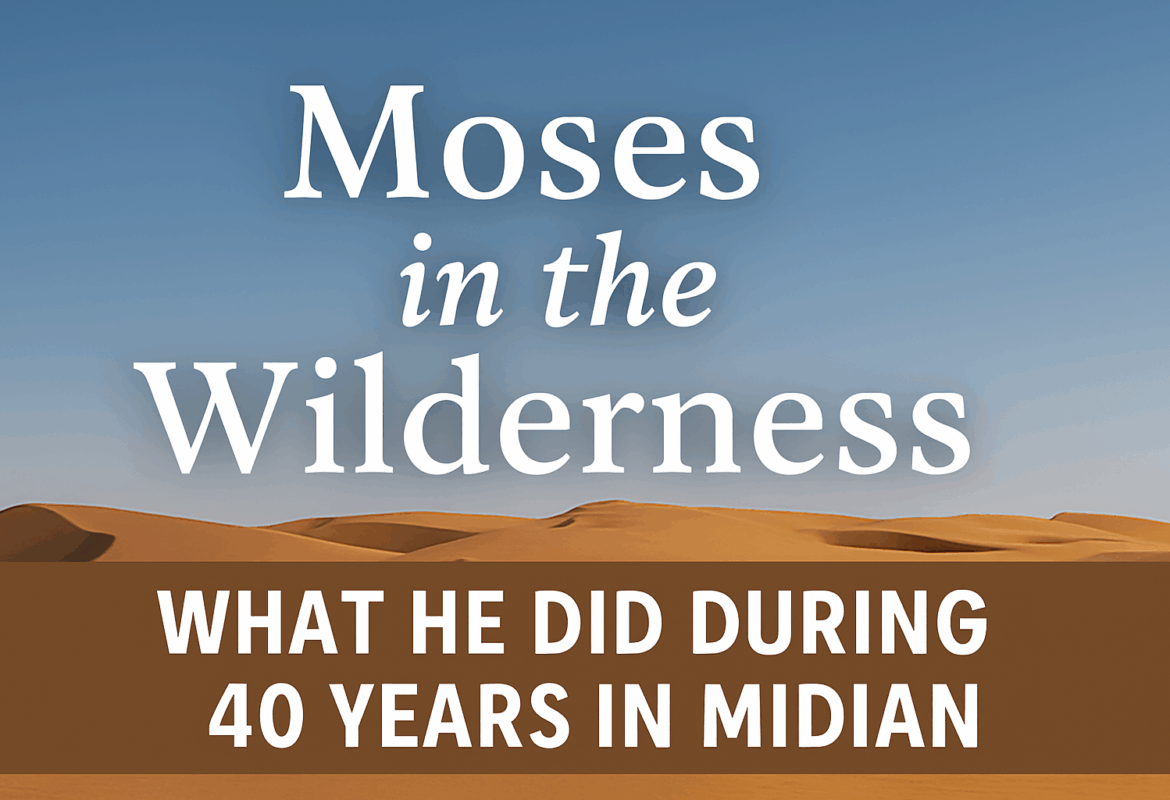The Forgotten Wilderness Years: What Did Moses Do Between Egypt and Exodus?
When we think of Moses, most of us picture the dramatic moments—standing before Pharaoh, parting the Red Sea, delivering the Ten Commandments. But have you ever stopped to wonder what happened during the long years between Moses fleeing Egypt and leading the Exodus?
That time in the wilderness wasn’t just filler. In fact, it was foundational. If you’re curious about Moses in the wilderness and want to learn more facts about Moses you may have never heard in Sunday school, you’re in for something interesting.
Moses Wasn’t Always a Confident Leader
Let’s rewind.
After killing an Egyptian to defend a Hebrew slave, Moses fled Egypt in fear of Pharaoh’s wrath. He was around 40 years old (Acts 7:23-29). He left behind a life of privilege, power, and identity crisis. Instead of living out his calling immediately, Moses landed in—of all places—Midian, a remote desert region far from the palaces of Egypt.
This is where Moses in the wilderness truly begins.
From Prince to Shepherd: A Humbling Career Shift
Moses went from royalty to tending sheep. And not even his own sheep—they belonged to his father-in-law, Jethro (Exodus 3:1).
Can you imagine that? One day you’re wearing fine linens in Pharaoh’s court, and the next, you’re walking barefoot through sand, chasing stubborn sheep under the desert sun.
It was in this slower, quieter life that God began shaping Moses into the leader He needed. Leadership doesn’t always begin on a stage. Sometimes it starts with silence, sweat, and solitude.
Wilderness Lessons: The Leadership Training You Didn’t Expect
The 40 years Moses spent in Midian weren’t wasted. They were years of preparation.
- He learned patience. Sheep don’t rush for anyone.
- He learned humility. There’s no applause in the desert.
- He learned to survive off the land. These survival skills would later help him lead an entire nation through a harsh environment.
Moses wasn’t “on hold.” He was in God’s classroom.
And here’s something beautiful—Moses probably didn’t even know he was in training. He wasn’t writing sermons or reading leadership books. He was living life, being faithful with what was in front of him. That’s a word for us, isn’t it?
A New Identity and a New Family
While in Midian, Moses got married. He started a family. He named his first son Gershom, which means “I have become a foreigner in a foreign land” (Exodus 2:22). That tells us a lot about how he felt—displaced, wandering, uncertain.
And yet, even in a foreign land, God was building something in Moses. Sometimes, we feel lost, but God is never lost. He knows exactly where you are.
The Burning Bush: When Everything Changed
After 40 years of shepherding, God shows up in a burning bush (Exodus 3). That’s when Moses gets his official assignment—to return to Egypt and lead God’s people out of slavery.
But here’s the twist: Moses tries to say no.
- He doesn’t feel qualified.
- Not strong enough.
- Then, he says, “Please send someone else” (Exodus 4:13).
Sound familiar?
So many of us feel that same way when a big moment comes. But those 40 years in the wilderness? God used them to teach Moses that leadership isn’t about being impressive—it’s about being available.
What We Can Learn from Moses in the Wilderness
The facts about Moses tell a story that’s not just about him—it’s about us too.
- Are you in a season of waiting or wandering?
- Do you feel like you’re in the wilderness with no clear direction?
- Are you wondering if your “in-between” season even matters?
Take heart. The same God who trained Moses in the desert is with you. He hasn’t forgotten you. He may be preparing you.
God used 40 years in the wilderness to make Moses into the man who would lead a nation. And He might be using this season to prepare you for what’s next. When you accept Christ as Savior, He sends the Holy Spirit to guide you–The most powerful force in the universe shows us the way. Isn’t God awesome?
Want more insights like this? Subscribe to the blog (sidebar) for weekly Bible study reflections, character deep-dives, and inspiring takeaways you can apply to everyday life.
Discover more from Making Christ Known
Subscribe to get the latest posts sent to your email.
